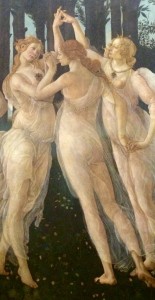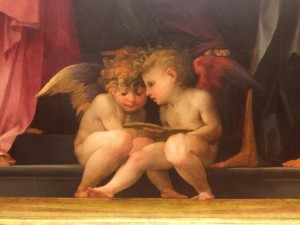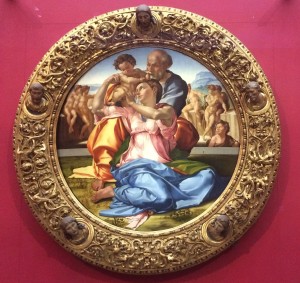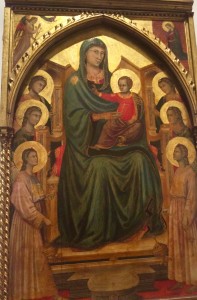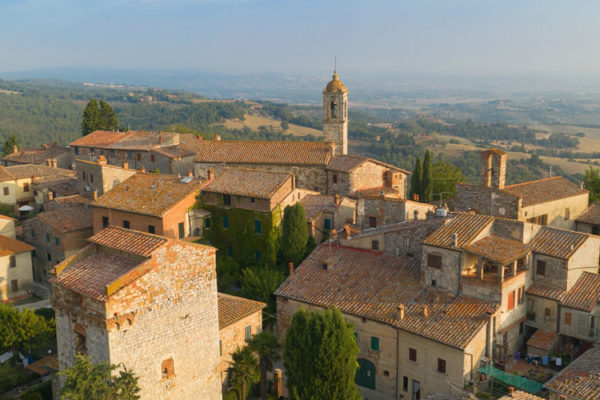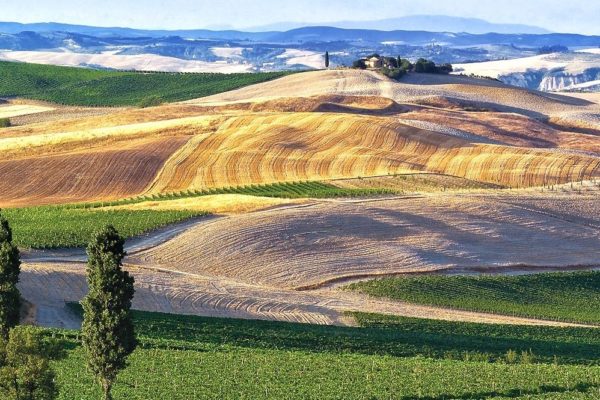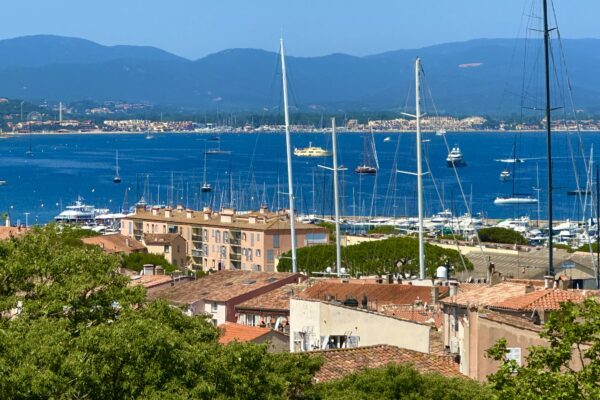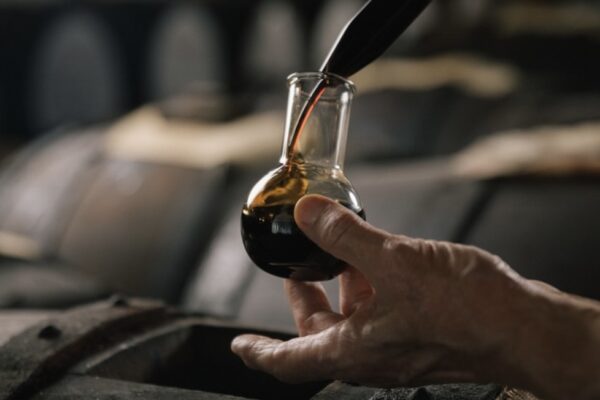THROUGH THE UFFIZI
by Marla Norman, Publisher
One of Europe’s finest museums, the Galleria degli Uffizi, consists of some 70 rooms filled with priceless treasures by Renaissance masters: Botticelli, Michelangelo, Raphael, Fra Filippo Lippi, Caravaggio and Titian to name a few. Easily the top tourist draw in the city, the Uffizi is packed with visitors and long wait lines. How to navigate the vast collection of art with hundreds of other visitors – many with heavy cameras and bags that can become lethal weapons in close quarters – is no easy task. A tour that includes advance tickets for easy entrance and a knowledgeable guide to sort out the best the Uffizi offers while managing crowds is the only solution. But which tour to take?
I chose Walks of Italy. The group has been conducting tours throughout the country since 2001. Co-founders Jason Spiehler and Stephen Oddo are travel addicts. I’ve interviewed both previously and been impressed with their organization and tour philosophy: “We want our guests to feel as if they’re spending time with friends. We believe in walking, not cattle herding, which is why we keep our group sizes to 12 people or fewer. With our tours, there’s never a problem interacting with the guide,” says Spiehler, who is an art historian with a Master’s degree from Yale in Historical Theology.
I’ve also had a chance to experience Spiehler/Oddo tours first hand with Walks of Italy, in Venice and a tour with their New York City-based company, Walks of New York for the Metropolitan Museum of Art – both were outstanding. I was hoping for a similar experience with the tour through the Uffizi. I wasn’t disappointed. It was superb! Our guide was not only knowledgeable about the Uffizi art collection, but well versed in Florentine history. He provided detailed information about the paintings and the various artists, while creating a historical perspective. He was also adept in circumventing the prodigious crowds – no easy feat at the Uffizi.
Here are highlights from an unforgettable day.
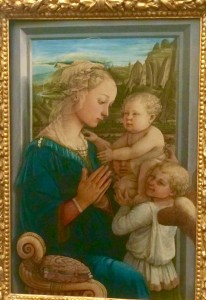
One of the most admired paintings of the Renaissance is this Madonna with Child and Two Angels by Filippo Lippi. The work has also generated much speculation about who may have served as the model for the Madonna. Filippo Lippi was a Carmelite monk who fell in love with a nun, Lucrezia Buti. Many assume she was the inspiration for the work. Lucrezia and Filippo had two children, including Filippino Lippi, who also became a brilliant painter, who in turn taught Sandro Botticelli. Photo by Marla Norman.
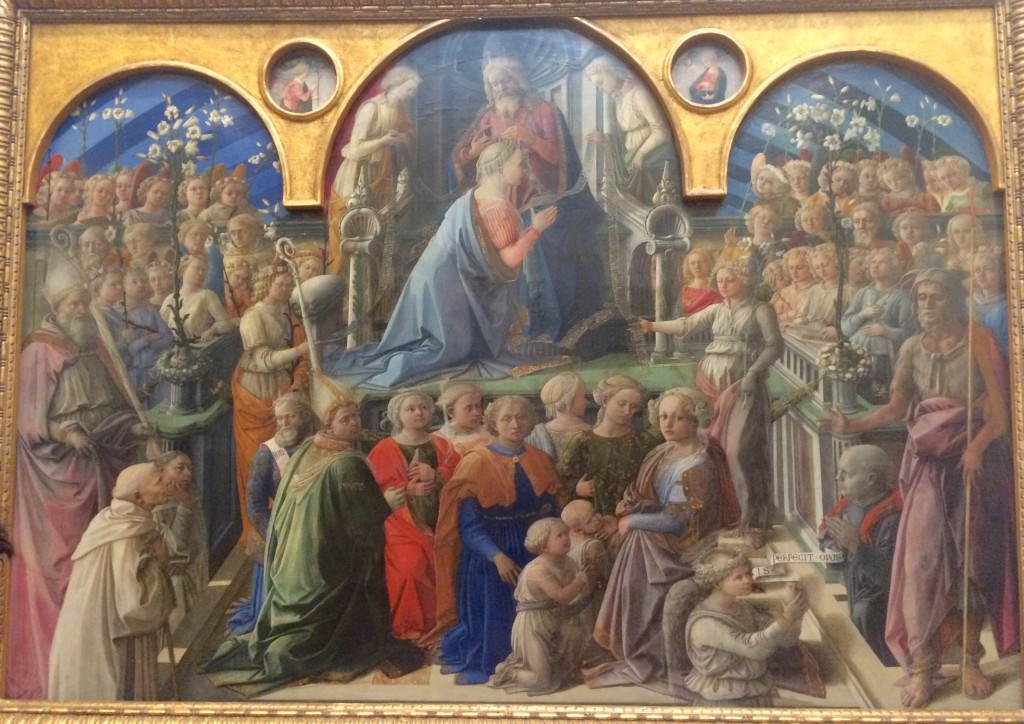
Coronation of the Virgin by Filippo Lippi is especially interesting for its perspective. Figures in the lower portion of the painting are much shorter than one would expect. But the painting was for cloistered nuns who saw the painting positioned above them from their choir. From their “perspective” the figures appeared perfectly natural. Photo by Marla Norman.
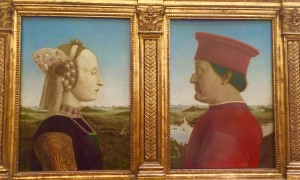
These dual portraits by Piero della Francesca of the Duke and Duchess of Urbino are one of the most popular exhibits at the Uffizi, in part because of the artist’s singular style and strange juxtaposition of the couple – together and yet apart. The Duke, who lost his right eye in a jousting tournament, is positioned so that only the left side of his face shows. His damaged nose, however is clearly on display, a result of his many years as a mercenary. Later, the Duke used his ill-gotten gains to transform Urbino into a cultural center. His wife, Battista Sforza, is exceedingly pale in the painting, most likely because the portrait is a memorial to her death in 1472. Photo by Marla Norman.
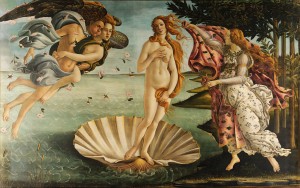
One of the most recognizable paintings at the Uffizi, The Birth of Venus by Sandro Botticelli. Drawing inspiration from the classical poet Homer, Botticelli portrays Zephyrus, God of the Winds carrying the breeze, Aura. Together, the two of them blow the Goddess of Love ashore. Horae, Goddess of the Seasons, receives Venus with a flower-covered robe. Simonetta Cattaneo, is thought to be the model for Venus and several other figures in Botticelli’s paintings. Simonetta was a favorite at the Medici court, but died at age twenty-two. She was born at Portovenere in Liguria, the place in mythological literature associated with the birthplace of Venus. Photo from Wikipedia.
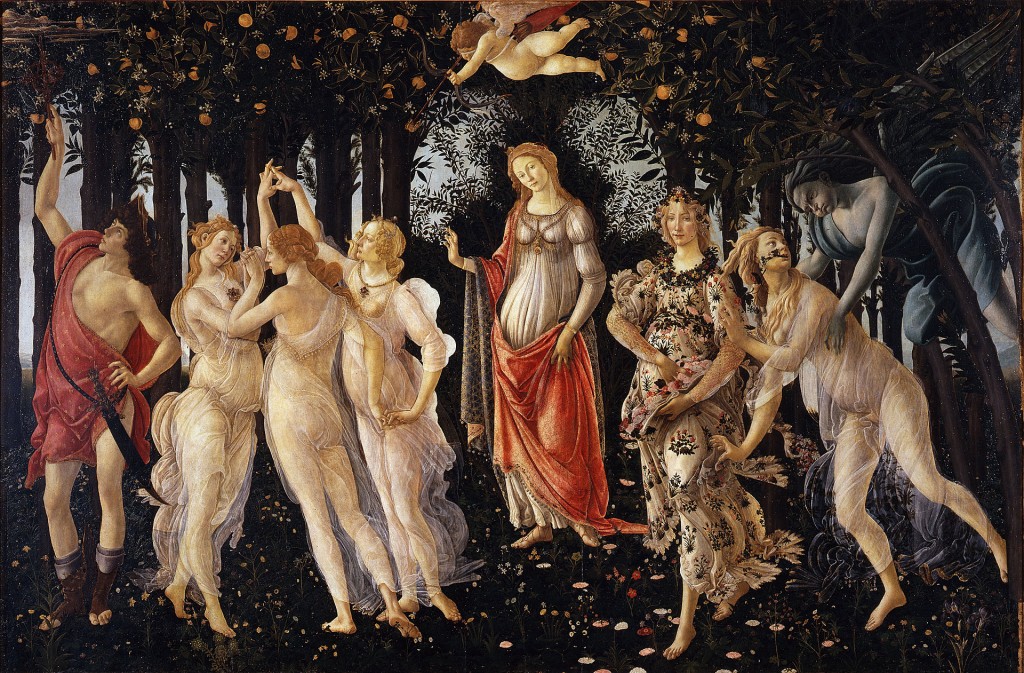
One of Botticelli’s most intriguing works, The Primavera, has baffled critics for centuries as to its meaning. The large, richly detailed painting depicts a blue-faced Zephyrus chasing Flora who then turns into Spring and spreads flowers across the earth. Venus, in the middle, rules the scene. On her left are the Three Graces dancing in celebration, while Mercury dissipates the clouds. Photo from Wikipedia.
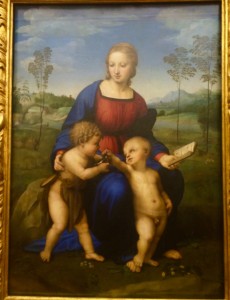
Madonna of the Goldfinch by Raphael. As elegant and attractive as his paintings, Raphael was enormously popular during his life, and is still very much appreciated for his use of color and realistic approach to painting. Interestingly, the Madonna was heavily damaged during an earthquake. A lengthy restoration was required to resurrect the piece. Photo by Marla Norman.
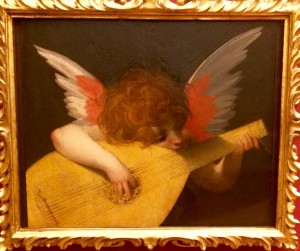
Musical Angel by Giovan Battista di Jacopo. Known for his bright red hair, the artist – who was from Florence – was nicknamed “Rosso Fiorentino.” He spent most of his life in France, where he introduced Florentine style to the School of Fontainebleau. This sweet portrait of an angel is presumed to be a study for a larger painting, but Jacopo seemed to have a knack for cute cherubs. Photo by Marla Norman.
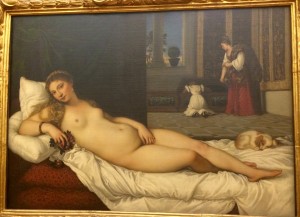
Venus of Urbino by Titian was commissioned by the Duke of Urbino Guidobaldo II Della Rovere for his young wife. The painting, in fact, represents the duties of a wife. To fulfill her husband, she must be erotic, as evidence by the representation of Venus. The dog is a symbol of marital fidelity, while the young child in the background symbolizes motherhood. Tiziano Vecelli or Titian, as he’s known in English spent most of his life in Venice. Photo by Marla Norman.


